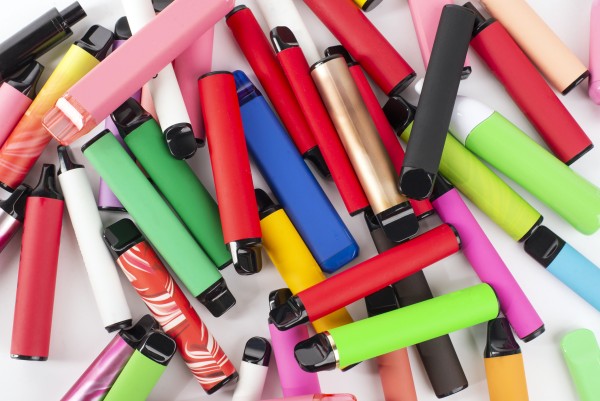Summary
Unlike Aotearoa New Zealand (NZ), Australia has not treated vaping products as consumer products but instead as prescription-only products. Yet despite this approach, illegal supply of vapes has seen youth vaping rise. The Australian Minister of Health, Mark Butler, this week responded by announcing new measures that will restrict vaping product imports, end sales of disposable vaping products, and decrease the appeal of vaping to young people.
Should NZ also consider these measures? In this article, we analyse that question and suggest NZ could benefit from adopting some Australian measures.
For some years, rising youth vaping rates in Aotearoa New Zealand (NZ) have caused concern among parents, teachers, communities and young people themselves. No one wants young people to begin vaping. Yet, our current policies do not adequately protect them from a marketing environment where vaping products are very appealing, very affordable, and very accessible. When introduced, manufacturers claimed vaping products would offer a reduced harm alternative to people who smoke. However, as we noted in previous blogs, marketing campaigns targeted young people, framed vapes as recreational devices, piqued young people’s interest, and vapes have become widely used as lifestyle accessories. As a result, youth and young adult vaping rates are much higher than among older age groups.
The NZ Government has consulted on measures to tighten existing regulations, including proposals that could stop specialist vape stores from setting up businesses near schools, reduce appealing flavour names and require all vape products to have removable batteries. We believe these proposals do not go far enough. The NZ Ministry of Health will soon release new regulations, but these will be limited to provisions outlined in the legislation.
Below, we review the new Australian policies, then consider whether NZ could benefit from adopting these.
New Australian measures
Australian Health Minister Mark Butler this week announced measures designed to reduce youth vaping prevalence and end illicit trade in vaping products that contain nicotine, particularly imports of non-prescription vaping products. Measures include:
- Increasing minimum product quality standards, a measure that will restrict the flavours, colours and other ingredients permitted in vaping products.
- Requiring vaping products to use “pharmaceutical-like packaging” (i.e., plain white packages with black font), a measure that will further decrease these products’ appeal to young people.
- Lowering permitted nicotine concentrations in vaping products, which will reduce their addictiveness.
- Making it easier for people who smoke (and who could reduce the harms they face by switching to exclusive vaping), to obtain prescriptions that enable them to access vaping products.
- Disallowing supply of single-use disposable vapes, which are young people’s product of choice.1
While the details still need to be outlined, these measures seem very likely to reduce youth vaping. They also recognise that vaping products could potentially reduce harm among people who smoke and who have not been able to quit using traditional cessation treatments.
Measures to end the sale of disposable vapes are important for several reasons. These products are inexpensive, brightly coloured, easy to conceal, and targeted at young people. Their product design and aesthetic values clearly promote uptake among young people.2 Adults who wish to switch from smoking to vaping have different needs; they require a device they can use over a longer time period, a need disposable vapes seem unlikely to address. Ending the sale of disposable vapes will reduce the appeal and affordability of vaping to young people, just as ending single stick and 10-pack cigarette sales made smoked tobacco more difficult to afford. However, this measure seems unlikely to deter people who smoke and wish to switch to vaping. Disposable vapes also cause considerable plastic, battery and electronic waste, and regulations ending sales of these products would benefit the environment as well as young people.3
Vaping regulation in NZ
Disposable vapes
Like Australian regulators, the NZ Ministry of Health has considered tighter regulation of disposable vaping products, but has taken a different approach. The Ministry recently consulted over a measure that would require vaping products to have removable batteries, which could effectively end sales of single-use disposable vapes. However, the policy had environmental objectives and affording greater protection to young people was a secondary benefit. Given the tobacco and vaping industry’s ability to circumvent policy measures, NZ should adopt a stronger approach, focus on protecting young people, and disallow the importation and sale of all disposable vapes.
Nicotine concentration
The NZ Government is currently considering limiting the nicotine concentration of vaping products. We support measures to reduce the addictiveness of vaping products but believe the level set needs a sound evidence base that recognises people who smoke will need a satisfying alternative to smoking, before they can switch successfully to vaping. NZ’s current permitted nicotine levels are considerably higher than those allowed in the EU and UK (where nicotine strength is limited to 20mg/ml), which do not appear to have adversely affected the decline in smoking attributed to vaping in the UK.
Plain packaging
Introducing pharmacy packaging (plain white packaging with black font text) will remove eye-catching branding and so help reduce the appeal of vaping among young people. The NZ Ministry of Health did not consult on this measure but we support its introduction, given eye-catching packaging is more likely to appeal to youth than to older people who smoke. Pharmacy-style packaging would differentiate vaping products from the dissuasive packaging used for smoked tobacco, complement measures that limit the flavour descriptors permitted, and position vaping products as “therapeutic” rather than lifestyle.
Retail locations
Australia aims to end illicit sales of vaping products containing nicotine in convenience stores; its current law does not permit sale of these products though compliance is reportedly poor. NZ has taken a different approach and allows vaping products to be sold as consumer products, although generic retail outlets such as dairies and convenience stores may sell only a restricted range of flavours (tobacco, menthol and mint flavoured products). As a result, young people remain widely exposed to vaping products, particularly as dairies develop specialist vape stores within their footprint to circumvent the law and sell the full range of flavours.4 A recent survey of secondary school students found 50% of those who reported vaping said they had obtained a vape from a dairy. Furthermore, high-street vape stores position their products in eye-catching window displays that attract the attention of passers-by.
NZ needs to reduce the widespread availability and visibility of vaping products to youth by restricting sales to specialist R18 stores. Alongside this change, NZ should allow only staff with certified expertise in supporting people to move smoking to exclusive vaping to sell vaping products. This measure would benefit people who smoke by ensuring they receive better quality advice than is currently provided,5 while reducing the risk they will buy unsatisfactory devices that lead them to resume smoking.6 7
The MoH has sought feedback on introducing proximity limits that would prevent stores near schools from selling vaping products. However, if introduced, these regulations would not apply retrospectively and the numerous outlets currently located near schools could continue selling vaping products. The MoH should also introduce density limits, called for by Local Government NZ, to prevent clusters of vape stores from operating within a small area.
Vaping and NZ’s tobacco endgame
These proportionate measures will restore the balance Minister Verrall and National leader Christopher Luxon agree is lacking. While NZ has adopted bold tobacco endgame measures, Australia has not announced plans to denicotinise or greatly reduce the availability of smoked tobacco products and its National Tobacco Strategy has taken a different direction. NZ’s focus on very rapid reductions in smoking prevalence makes it important that people who smoke can access alternative nicotine sources, including vaping products for those who have not found approved cessation treatments effective. As smoking prevalence falls, discussion needs to examine how people who vape may be supported to quit, and a pharmacy-supply model that supports vaping cessation may be appropriate at that time, as others have already suggested.
Australia’s new steps include some measures NZ is currently considering and that may be included in the regulations implementing the Smokefree Environments (Smoked Tobacco Products) Amendment Act 2023.8 However, while NZ may not yet wish to move to Australia’s prescription-only model, regulators could do more to restrict the availability of vaping products, including ending sales of disposable vapes, as Australia has announced. The approaches we have outlined would benefit young people who do not smoke as well people who do, and should be regulatory priorities.
What is new in this Briefing
- Australia has announced new policies designed to reduce vaping prevalence among young people, including ending the importation and sale of disposable vapes.
- New Zealand’s focus on requiring disposable vaping products to have removable batteries could effectively end sale of these products; however, adopting Australia’s approach would be simpler and potentially more effective.
Implications for public health
- Disposable vaping products have seen thousands of young people become dependent on nicotine yet offer little benefit to people who smoke; policies to end the availability and sale of these products should be an urgent regulatory priority.
- Restricting the retail outlets permitted to sell vaping products and enforcing robust proximity and density restrictions will also provide young people with the protection they deserve.
- Introducing pharmacy-style packaging would challenge marketing activities that have positioned vaping products as recreational devices, complement proposed changes to evocative flavour descriptors, and help reduce the appeal of vaping products to young people.
Author details
Prof Janet Hoek, Department of Public Health, University of Otago, Wellington and Co-Director, ASPIRE2025
Dr Jude Ball, Senior Research Fellow, Department of Public Health, University of Otago, Wellington and ASPIRE2025
Anaru Waa, Senior Research Fellow, Department of Public Health, University of Otago, Wellington and Co-Director, ASPIRE2025
Prof Richard Edwards, Department of Public Health, University of Otago, Wellington and Co-Director, ASPIRE2025


